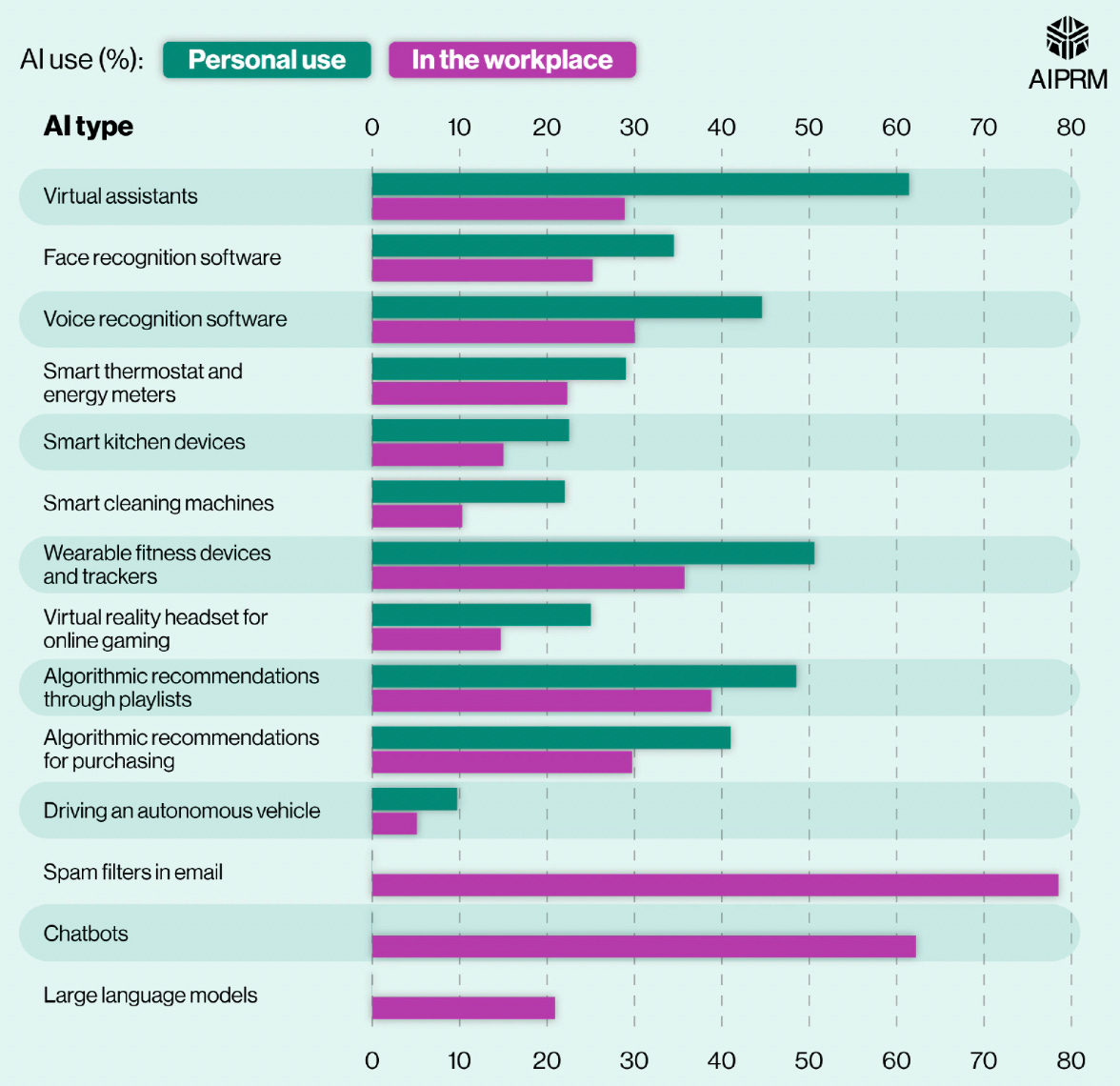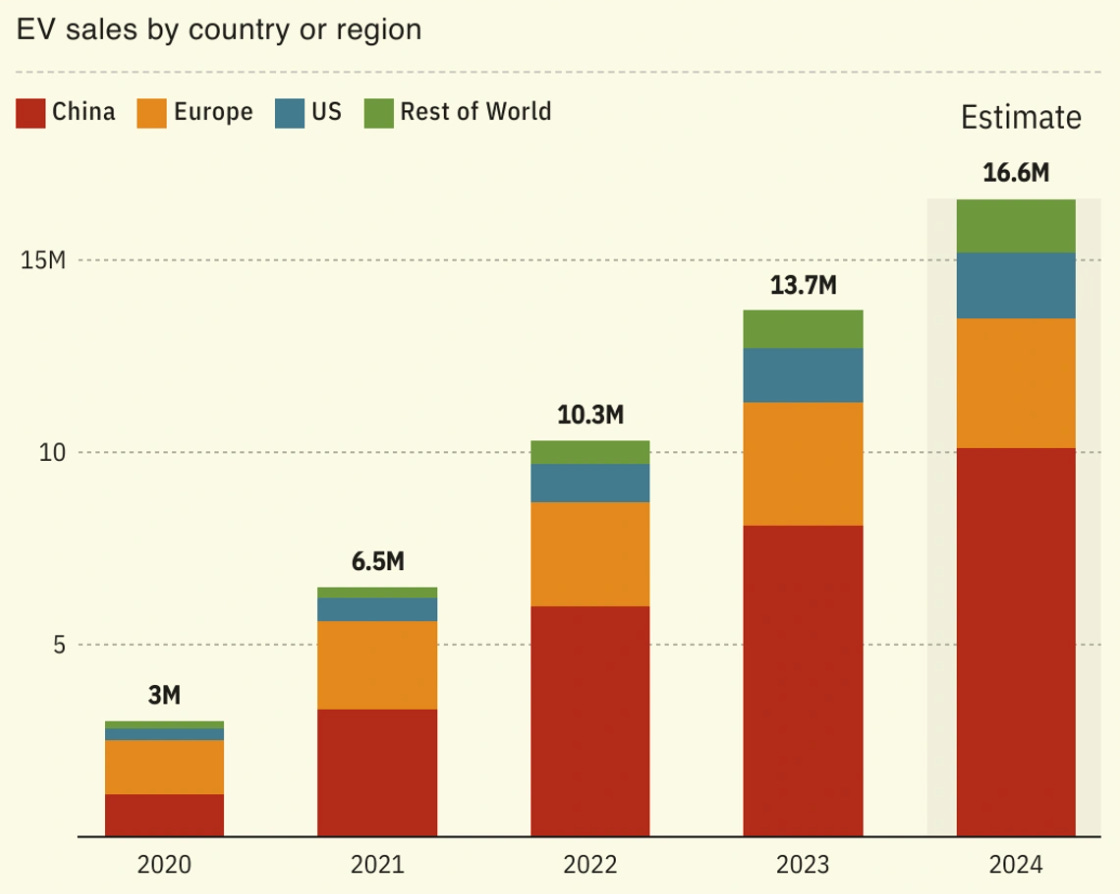Get in Front of 50k Tech Leaders: Grow With Us Happy Monday Team, What do you use AI for? Share your experiences in the comments section below. Today we are sharing the most popular uses of AI and exploring its impact on the energy grid and also how generative AI is reshaping IT economics. Additionally, check out our AI-powered selfie and avatar tools section. Let's dive in!
📰 AI News and Trends
🌐 Other Tech news
How Generative AI Is Reshaping IT Economics.A Gartner's analysis suggests that while generative AI (GenAI) will drive up spending on enterprise software, it may not necessarily boost profits for most companies involved in software development. The forecast for IT spending in 2024 is set to increase by 7.5% globally, reaching approximately $5.26 trillion. Notably, spending on data center systems is expected to significantly rise by 24.1%, largely driven by the demands for GenAI processing power. However, despite the surge in spending, the benefits may not be evenly distributed. Most software companies will find themselves needing to integrate GenAI into their products by the end of 2025 to stay competitive. This urgency does not leave them sufficient time to develop their own GenAI solutions, forcing many to rely on third-party GenAI providers. This reliance transforms GenAI into a form of "tax", where additional revenue generated from integrating these AI features might simply cycle back to the GenAI model providers, rather than leading to substantial profits for the developers themselves. In essence, while the integration of GenAI is pushing up software spend, it might lead to a scenario where only a few players who provide these foundational GenAI models or those who can afford the infrastructure investment in GenAI-optimized servers might see significant profit increases. This situation creates a bottleneck where the real beneficiaries of the surge in software spend might be limited to those who already dominate the trend. Looking forward, the influence of GenAI on IT infrastructure and software development is expected to reshape investment priorities, focusing increasingly on cloud services, data center upgrades, and advanced server setups to handle more complex, data-intensive tasks required by GenAI applications. Powering the Future of Tech - The Energy Challenge.The rapid expansion of artificial intelligence (AI) and data centers is significantly increasing the U.S. demand for energy, presenting both challenges and opportunities for the tech industry and environmental sustainability. Rising Energy Demands and AI Expansion
Environmental Impact and Sustainability Efforts
Strategic Responses to Energy Needs
Infrastructure and Future Prospects
This nexus of technology growth, energy demand, and sustainability underscores the critical need for innovative solutions to ensure that the burgeoning AI sector supports environmental goals while continuing to drive technological advancement. The potential for upcoming major announcements could signal significant shifts in how tech companies address these challenges, aiming to maintain the U.S. as a leader in both technology and eco-friendly innovation. 🧰 AI ToolsAvatars / Selfies and More.
AI Usage Trends.
Emerging Research and Developments:
Market and Industry Implications: AI Bubble Concerns: Despite a recent downturn in tech stocks and skepticism about AI's immediate potential, the debate continues with arguments. 🚀 Showcase Your Innovation in the Premier Tech and AI Newsletter (link) As a vanguard in the realm of technology and artificial intelligence, we pride ourselves in delivering cutting-edge insights, AI tools, and in-depth coverage of emerging technologies to over 55,000+ tech CEOs, managers, programmers, entrepreneurs, and enthusiasts. Our readers represent the brightest minds from industry giants such as Tesla, OpenAI, Samsung, IBM, NVIDIA, and countless others. Explore sponsorship possibilities and elevate your brand's presence in the world of tech and AI. Learn more about partnering with us. You’re a free subscriber to Yaro’s Newsletter. For the full experience, become a paying subscriber. Disclaimer: We do not give financial advice. Everything we share is the result of our research and our opinions. Please do your own research and make conscious decisions. |
Monday, August 12, 2024
📈AI Usage Trends
Friday, August 9, 2024
🌍AI Inclusion is of Paramount Importance.
🌍AI Inclusion is of Paramount Importance.Plus: Perplexity Popularity Surges + A Comparative Analysis of EV’s Adoption in China and the USA.
Get in Front of 50k Tech Leaders: Grow With Us Happy Friday, Team! Today, we delve into the critical life-and-death implications of AI exclusion. As perplexity in the tech world grows, Google's legal challenges regarding its alleged monopoly could paradoxically fuel its further expansion. Additionally, we'll explore a comparative analysis of EV adoption across the globe.
📰 AI News and Trends
🌐 Other Tech news
Perplexity Popularity Surges.
Perplexity AI, a San Francisco-based AI search startup, is rapidly growing as it challenges Google's dominance in the search market. With a recent $250 million funding round, the company has seen a sevenfold increase in monthly revenues and processed about 250 million queries last month. Transitioning from subscriptions to advertising, Perplexity aims to compete in the $300 billion search ad industry. Despite initial data-gathering controversies and plagiarism accusations, the company has refined its strategies, focusing on high-quality sources and developing its proprietary search technologies. This shift underscores Perplexity's potential to reshape the AI-driven search landscape. A Comparative Analysis of EV’s Adoption in China and the USA.In July 2024, China marked a significant milestone in the automotive industry as electric vehicles (EVs) and plug-in hybrid vehicles (PHEVs) collectively known as new energy vehicles (NEVs), accounted for over half of the car sales for the first time. This surge represents a 37% increase year-over-year, totaling 50.7% of all car sales, compared to 7% three years ago, underscoring a rapid growth fueled significantly by robust government incentives, including doubled cash incentives now at 20,000 yuan ($2,785) and a sales tax exemption up to 30,000 yuan ($4,175) for 2024 and 2025. In comparison, as of the first quarter of 2024, EVs accounted for approximately 10% of new vehicle sales in the US as per the Department of Energy. Amidst this electric surge, another technological shift is gaining momentum in China: the rise of autonomous vehicles, particularly robotaxis. Companies like Baidu’s Apollo Go, along with Pony.ai, WeRide, AutoX, and SAIC Motor, are at the forefront of deploying these autonomous services across Chinese cities. As of now, at least 19 cities are running tests, with ambitious expansion plans like Apollo Go's aim to operate in 100 cities by 2030. This push into autonomy, however, comes with societal ripples, particularly affecting the 7 million ride-hailing drivers in China who face uncertain futures due to potential job disruptions. In the US, autonomous vehicle deployment is more cautious, focusing on testing in select cities. Companies like Waymo and Cruise operate only a few thousand vehicles primarily in test modes, with operational footprints in cities like San Francisco, Phoenix, and Los Angeles. This juxtaposition of booming electric vehicle sales and the burgeoning robotaxi sector paints a dual narrative of technological advancement and social challenges. China's strategy reflects a concerted push to lead in crucial future technologies while navigating the socio-economic impacts of such rapid technological adoption. The U.S. has a more conservative and fragmented regulatory approach, with significant scrutiny and slower approval processes, reflecting safety and regulatory concerns following incidents during tests. 🧰 AI ToolsAvatars / Selfies II.
AI Inclusion is of Paramount Importance.The paramount importance of inclusivity in AI development highlights the severe, life-or-death implications of exclusion. This draws attention to the stark digital divide, noting that approximately 2.6 billion people lack internet access and another 3.1 billion endure regular electricity shortages. These factors aggravate social and economic disparities and restrict access to essential services such as healthcare. Core Issues:
Ethical Implications: Exclusion from AI development violates the fundamental human right to equal participation in technological advancements. It could also narrow the focus of medical research and health policies, potentially marginalizing the health needs of billions. Strategies for Inclusive AI:
The acronym AGENCY, derived from these strategies, encapsulates a call to action to empower all of humanity in the AI era, emphasizing a shift from digital poverty to abundance. The article calls for a proactive approach to AI development that prioritizes ethical and inclusive practices. 🚀 Showcase Your Innovation in the Premier Tech and AI Newsletter (link) As a vanguard in the realm of technology and artificial intelligence, we pride ourselves in delivering cutting-edge insights, AI tools, and in-depth coverage of emerging technologies to over 55,000+ tech CEOs, managers, programmers, entrepreneurs, and enthusiasts. Our readers represent the brightest minds from industry giants such as Tesla, OpenAI, Samsung, IBM, NVIDIA, and countless others. Explore sponsorship possibilities and elevate your brand's presence in the world of tech and AI. Learn more about partnering with us. You’re a free subscriber to Yaro’s Newsletter. For the full experience, become a paying subscriber. Disclaimer: We do not give financial advice. Everything we share is the result of our research and our opinions. Please do your own research and make conscious decisions. © 2024 Yaro Celis |




